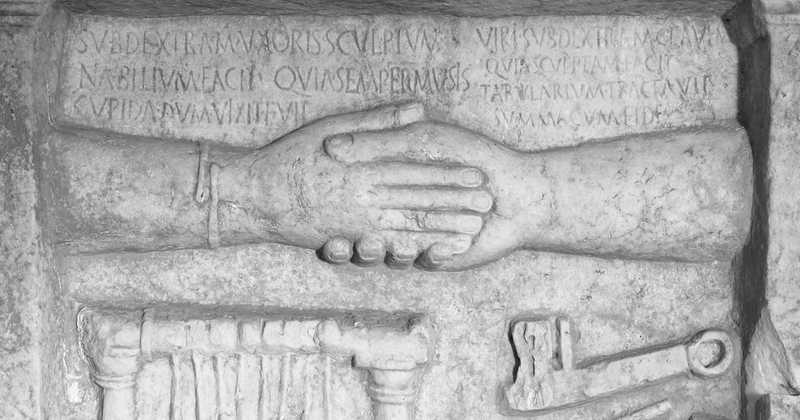Excavations at ancient Dion, a relatively small city but with a long and eventful history, have revealed unique finds. One of them is the burial monument of the image, a mark on the grave of two spouses. The couple maintains their anonymity, but eloquent are the representations and the latin inscriptions of the early imperial times for their occupations.

The woman, a devotee of the muses, played the stringed musical instrument depicted on the left, the nabilium, as the inscription cites. In this relief of Dion, we have the unique depiction of the musical instrument known from the written sources that the Greeks called nabla. As for her husband, he served with honesty in the city archive, while his occupation is illustrated by the accessories of his work, a pen, an inkwell, a key and an open papyrus.
The dexiosis, that is the handshake (dexrtarum junctio) at the top of the relief, usually a typical iconographic theme, in this case acquires substance, thanks to the content and ethos of the inscriptions that exude love and conjugal devotion.

